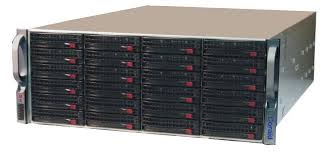Executive Summary
As businesses grow, managing and securing data becomes increasingly critical. Two powerful storage architectures—Network Attached Storage (NAS) and Storage Area Network (SAN)—offer scalable, cost-effective, and high-performance solutions for data management. This white paper provides an overview of NAS and SAN technologies, a comparative analysis, a SWOT evaluation, and strategic insights for small and medium-sized enterprises (SMEs) considering storage modernization.
White Paper: Network Attached Storage (NAS) and Storage Area Network (SAN) Solutions for Small and Medium-Sized Businesses
Prepared by: KeenComputer.com and IAS-Research.com
Executive Summary
As businesses grow, managing and securing data becomes increasingly critical. Two powerful storage architectures—Network Attached Storage (NAS) and Storage Area Network (SAN)—offer scalable, cost-effective, and high-performance solutions for data management. This white paper provides an overview of NAS and SAN technologies, a comparative analysis, a SWOT evaluation, and strategic insights for small and medium-sized enterprises (SMEs) considering storage modernization.
Introduction
Storage infrastructure is the backbone of modern IT systems. Traditional Direct Attached Storage (DAS) often leads to data silos, underutilized resources, and scalability challenges. NAS and SAN solutions address these issues by enabling centralized, flexible, and efficient data storage across an organization.
1. Technology Overview
Network Attached Storage (NAS)
NAS is a file-level storage architecture connected to a standard Ethernet LAN. It provides shared storage via protocols such as NFS, SMB/CIFS, or AFP and is managed by a NAS server.
- Use Cases: File sharing, multimedia storage, backup, collaboration
- Protocols: NFS, SMB/CIFS, FTP, HTTP
Storage Area Network (SAN)
SAN is a high-speed, block-level storage network that connects servers to storage devices. SAN typically uses Fibre Channel, iSCSI, or ATA over Ethernet.
- Use Cases: Databases, virtualization, high-transaction environments
- Protocols: Fibre Channel, iSCSI, AoE, FCoE
2. NAS vs SAN: Comparison
| Feature | NAS | SAN |
|---|---|---|
| Access Type | File-level | Block-level |
| Performance | Moderate | High |
| Scalability | Good | Excellent |
| Complexity | Low | Moderate to High |
| Cost | Lower | Higher |
| Protocols | NFS, SMB | iSCSI, Fibre Channel |
3. SWOT Analysis
NAS (Network Attached Storage)
Strengths:
- Cost-effective
- Easy to deploy and manage
- Ideal for general-purpose file storage
Weaknesses:
- Lower performance for high-I/O applications
- Limited scalability in large enterprise setups
Opportunities:
- Integration with cloud storage
- Increased adoption in remote work environments
Threats:
- Bandwidth limitations in busy LAN environments
- Security vulnerabilities if not properly managed
SAN (Storage Area Network)
Strengths:
- High-speed performance
- Excellent scalability
- Suitable for mission-critical applications
Weaknesses:
- Higher cost and complexity
- Requires specialized management
Opportunities:
- Virtualization and cloud backup integration
- Adoption in high-performance computing (HPC)
Threats:
- Compatibility issues with legacy systems
- Risk of overengineering for SME use cases
4. Recommendations for SMEs
- Use NAS for file sharing, backups, and general-purpose storage where budget and simplicity are priorities.
- Use SAN for high-performance databases, virtualization, and critical workloads.
- Hybrid Solutions: Combine NAS for archival and SAN for active workloads.
- Consider cloud-integrated solutions for additional resilience and scalability.
5. How KeenComputer.com and IAS-Research.com Can Help
Our engineering teams specialize in:
- Designing custom NAS and SAN architectures
- Implementing cost-effective solutions for SMEs
- Migrating from DAS to centralized storage
- Ensuring compliance, backup, and disaster recovery planning
Contact us for a consultation to determine the best-fit storage solution for your business.
References
- "How NAS and SAN are Different - A Tutorial Introduction." YouTube, https://www.youtube.com/watch?v=csdJFazj3h0
- Smith, R. (2021). Enterprise Storage Systems and Solutions. TechBooks Publishing.
- Stallings, W. (2018). Data and Computer Communications. Pearson Education.
- Red Hat. (2023). "Understanding the Difference Between NAS and SAN." https://www.redhat.com
- Cisco Systems. (2022). "Storage Networking Basics." https://www.cisco.com
For additional information and tailored consultations, visit:
www.KeenComputer.com and www.IAS-Research.com
